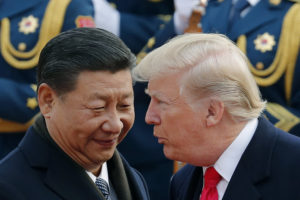Pakistan Turns Desert Into a Sea of Solar Panels
Economic links with China help Pakistan tap into enormous solar energy potential that can provide clean power to boost production and reduce poverty.
By Saleem Shaikh, TomDispatch

The vast Quaid-e-Azam solar plant in southern Punjab is a powerful indicator of Pakistan’s clean energy goals. (Government of Punjab)
This Creative Commons-licened piece first appeared at Climate News Network.
ISLAMABAD — One of the world’s largest solar plants has been opened in Pakistan with the aim of supplying clean, reliable energy and helping alleviate the country’s chronic power shortages.
The plant, spread over more than 200 hectares of desert land in the south of Pakistan’s Punjab province, will generate 100 megawatts (MW) in its initial phase and more than 300MW by the end of the year, according to government officials.
More than a third of Pakistan’s population do not have access to electricity, and power shortages are a serious impediment to economic growth.
Inaugurating the plant, Nawaz Sharif, Pakistan’s prime minister, said: “Since I became prime minister, my one goal has been to eliminate darkness in Pakistan and bring lights back to the country.”
Mushahidullah Khan, the Federal Minister for Climate Change, told the Climate News Network that the government is determined to make use of what it sees as the country’s enormous solar energy potential.
Energy crisis
He said: “Tackling our energy crisis is the top priority of the present government as we believe it is vital in order to achieve economic growth, alleviate poverty, boost agricultural and industrial production and — through the provision of clean, solar power — reduce the country’s carbon footprint.”
The plant – called the Quaid-e-Azam Solar Power Park – was constructed in less than a year by China’s Tebian Electric Apparatus Stock Company, at a cost of US$131 million.
“Solar energy is especially suited
to remote areas in the country where connectivity to the national grid is difficult”
China has been forging ever closer economic links with Pakistan as part of a plan to link China’s western Xinjiang region to the Pakistan port of Gwadar on the Arabian Sea. The government in Islamabad says China is likely to invest more than $30 billion in solar and other power projects in Pakistan in the coming years.
At present, more than 60% of Pakistan’s power is generated from oil and gas, and about 30% from hydro power.
Pakistan is considered to be one of the countries in the Asia-Pacific region most vulnerable to the impacts of climate change.
Erratic flow
In particular, the flow of water in the Indus river — upon which millions depend for hydro power and for irrigating crops — has become increasingly erratic due to changing rainfall patterns, glacial melt in the western Himalayas region, and the impact of widespread deforestation.
Government officials say they are determined to push ahead with more solar and wind projects throughout the country.
Asjad Imtiaz Ali, chairman of Pakistan’s Alternative Energy Development Board, said the development of solar and other renewable energies was hampered in the past by inconsistencies in government policy, and by a lack of understanding of clean energies.
“Solar energy is especially suited to remote areas in the country where connectivity to the national grid is difficult, such as Punjab, Baluchistan and Sindh provinces,” he said.
As part of the push for more solar projects, the government recently announced the abolition of duty on the import of solar panels.
Your support matters…Independent journalism is under threat and overshadowed by heavily funded mainstream media.
You can help level the playing field. Become a member.
Your tax-deductible contribution keeps us digging beneath the headlines to give you thought-provoking, investigative reporting and analysis that unearths what's really happening- without compromise.
Give today to support our courageous, independent journalists.






You need to be a supporter to comment.
There are currently no responses to this article.
Be the first to respond.